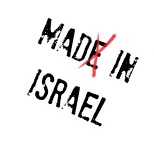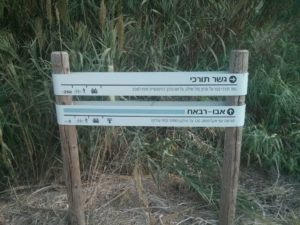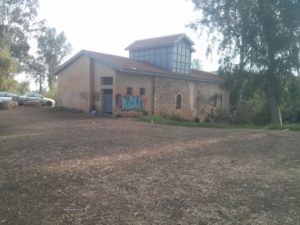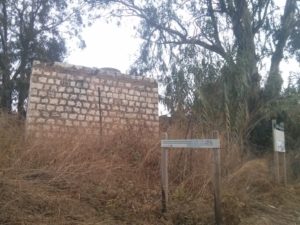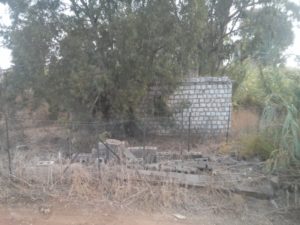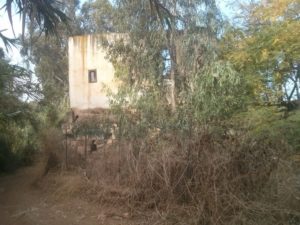Hi,
Ima finally got it!
She’s allowed to smoke cannabis ![]() , legally. She asked for it to go over the pains she feels after the surgery to take out the breast cancer she had 5 years ago.
, legally. She asked for it to go over the pains she feels after the surgery to take out the breast cancer she had 5 years ago.
She kept saying it was for us, that she won’t use it. I wouldn’t say no to smoke once in a while or having a “green” birthday cake but we really want her to get it for her. See Ima has an addiction problem, and she herself didn’t want to take hard pain relievers for the fear she will addict to them.
I really thought she might not smoke them. The cigarettes In the last wedding, there were so many cannabis rolled cigarettes and she refused to smoke them. “Here, take one. It’s better than the one you smoke”. She didn’t take, till now I don’t know why.
I don’t like the Idea she will smoke it, but she smokes as you know and we can’t make her stop. The cannabis cigarettes are hand rolled and smaller. Once you smoke hand rolled you smoke less: the cigarettes are smaller and you have to roll them each time. But she’s not allowed to smoke all day (she cannot smoke it in the school she teaches in because it is near minors) and they come already rolled. It won’t make smoke less, but at least it will ease her pain ![]()
It was a long time to get it, but she finally got it. Hopefully it will be easier for other people to get it. I really in to use as a pain reliever and as a “fun drug”. It is not addicting as other drugs the medicine companies try to sell us. It is not worse than alcohol that for sure. Hope it will easier to get cannabis in here, and hopefully cheaper.
Take Care
Gad
P.S.
The pictures are from a run I had along the Yarkon river On Israel National Trail
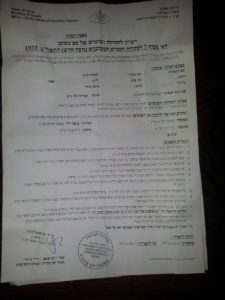 A License for holding “dangerous drugs” – Cannabis
A License for holding “dangerous drugs” – Cannabis
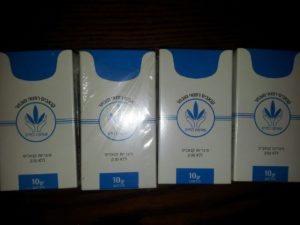 Here it is!
Here it is! ![]() – Packed with Cannabis and rolled
– Packed with Cannabis and rolled
Running along the Yarkon on Israel National Trail
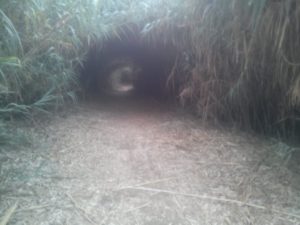 A natural tunnel along the Yarkon
A natural tunnel along the Yarkon
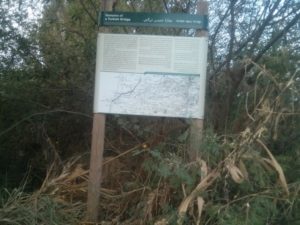 One of the sign that spread along the Yarkon with explanations
One of the sign that spread along the Yarkon with explanations
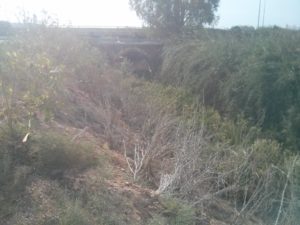
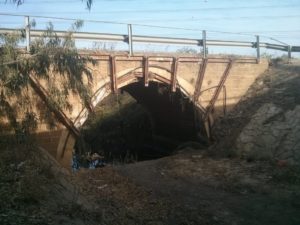
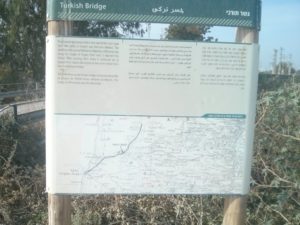 Turkish Bridge – The stone bridge across Shilo stream carried the main road from Yafo (Jaffa) to TulKarm and Shechem (Nablus). The road from Yafo passed Tell Gerisa (Napoleon Hill) on its way along the length of Yarkon river until it reached this bridge. After crossing Shilo creek it continued on to Yarkon River, about 200m to the north where there was an additional bridge.
Turkish Bridge – The stone bridge across Shilo stream carried the main road from Yafo (Jaffa) to TulKarm and Shechem (Nablus). The road from Yafo passed Tell Gerisa (Napoleon Hill) on its way along the length of Yarkon river until it reached this bridge. After crossing Shilo creek it continued on to Yarkon River, about 200m to the north where there was an additional bridge.
The Turks blew up the Yarkon bridge during the Great War to prevent the British forces advance northwards. The bridge on Shilo stream was left untouched.
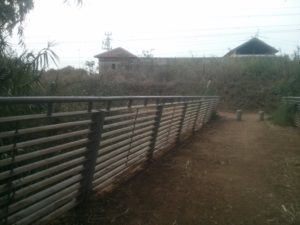
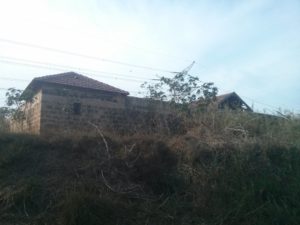 Pardes (Grove) Bahriya and new bridge over the Yarkon – Cannabis
Pardes (Grove) Bahriya and new bridge over the Yarkon – Cannabis
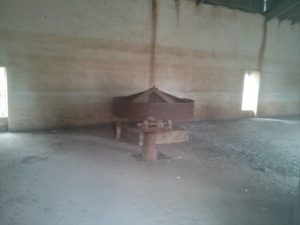
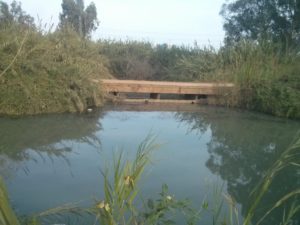
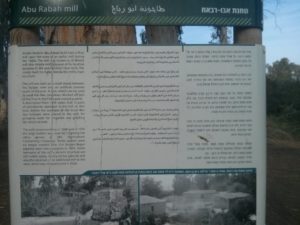 Abu Rabah mill – Sheikh Ibrahim Abu-Rabah built here a flour mill upon the ruins of and earlier mill during the 1880s. The mill was known as El-Wasita mill (the middle mill) because of its location between El-Mir and Faruhiah flour mills. The sheikh built his home beside the mill’s main structure.
Abu Rabah mill – Sheikh Ibrahim Abu-Rabah built here a flour mill upon the ruins of and earlier mill during the 1880s. The mill was known as El-Wasita mill (the middle mill) because of its location between El-Mir and Faruhiah flour mills. The sheikh built his home beside the mill’s main structure.
The mill was built on a small island between the Yarkon river and an artificial channel south of the river. A weir, which can be used to cress the river nowadays blocked part of the flow in the river and created a pond. A description from 1899 stated that 12 pairs of grindstone operated in the the mill at that time. Before the outbreak of the Great War two turbines were placed in the mill, for pumping water for irrigation and grinding the wheat kernels.
The mill ceased working in 1948 and in 1950 the large turbine was used for irrigating the citrus groves of HKL (Agricultural contracting company). These pumps were no longer needed after the Yarkon-Negev pipeline went into opertaion in 1959. Some remnants of the mill’s ancient structure are still visible today, mostly below ground and also the structure of an additional mill to the west, which was reconstructed in 2004.
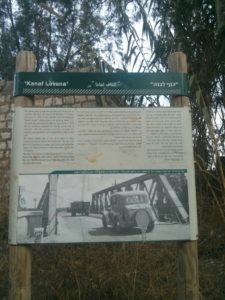 “Kanaf Levana” – The stone building with the plot of land on its northern side cover an area of 450 dunams (110 acres), and since the 1950’s it was a private estate belonging to “Kanaf Levana”, raising geese and growing citrus fruit. This area was purchased by Moashav Neve Yarak in 1972 and its members replaced the orange groves with a vineyard. Later the moshav’s members uprooted the vineyard and opted for non-irrigated field corps in this plot.
“Kanaf Levana” – The stone building with the plot of land on its northern side cover an area of 450 dunams (110 acres), and since the 1950’s it was a private estate belonging to “Kanaf Levana”, raising geese and growing citrus fruit. This area was purchased by Moashav Neve Yarak in 1972 and its members replaced the orange groves with a vineyard. Later the moshav’s members uprooted the vineyard and opted for non-irrigated field corps in this plot.
The Kanaf Levana weir is on of a series of weirs constructed by the Yarkon River Authority. The weir was built with boulders to increase turbulence and aerate the water. The water continued to flow here after driving the mill wheels.
The weirs also serve as bridges crossing the River Yarkon, mainly for vehicles and cyclists. Additional weirs along the river: Neve Yark weir, Qana River weir, Taas Weir and the agricultural.
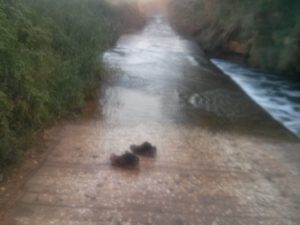 The trail cross the Yarkon in this point. I tried to stay on one side, but it turned as a hugh bypass
The trail cross the Yarkon in this point. I tried to stay on one side, but it turned as a hugh bypass
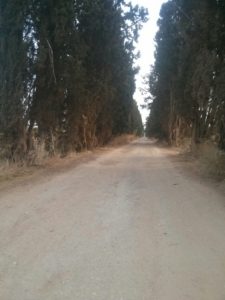 A nice Cypress boulevard probably from the days most of this area was empty from roads and trails.
A nice Cypress boulevard probably from the days most of this area was empty from roads and trails.
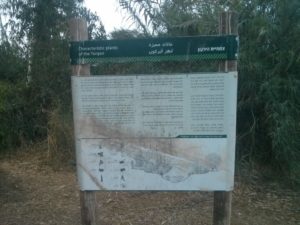
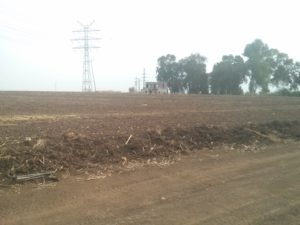
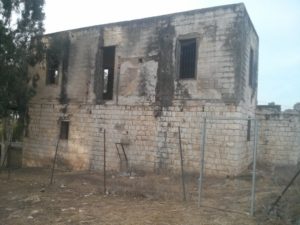
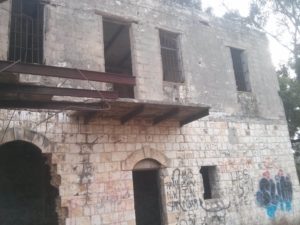
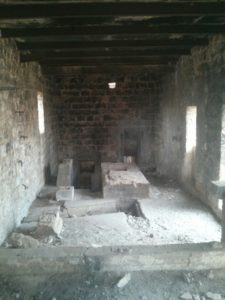
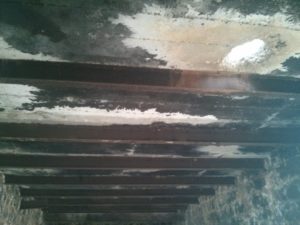
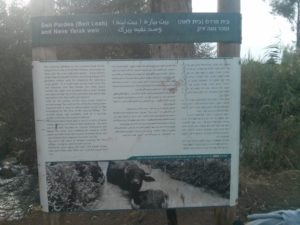 Beit Pardes (Beit Leah) and Neve Yarak weir – The building standing on the northern bank of the Yarkon River is the deserted Beit Pardes, also known as “Beit Leah” for some unknown reason. It was built on stages beginning with the first storey that housed the pumping station used the irrigating the adjoining citrus grove. In a small room to the north lived the well operator, who also tended the citrus grove. Initially the water was pumped with a small engine and replaced later by a more powerful one, which was anchored to the floor with cast cement.
Beit Pardes (Beit Leah) and Neve Yarak weir – The building standing on the northern bank of the Yarkon River is the deserted Beit Pardes, also known as “Beit Leah” for some unknown reason. It was built on stages beginning with the first storey that housed the pumping station used the irrigating the adjoining citrus grove. In a small room to the north lived the well operator, who also tended the citrus grove. Initially the water was pumped with a small engine and replaced later by a more powerful one, which was anchored to the floor with cast cement.
Later on, the owners of the citrus grove added a second storey. The roofing tiles of the first storey were replaced with a cement ceiling which served as the foundation for the floor of the second storey. The second storey was probably used as a summer residence for citrus grove’s owners.
The nearby Neve Yarak weir is one of a series of weirs constucted by the Yarkqon River Authority.
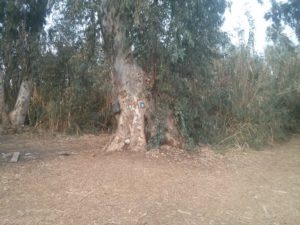 Israel National Trail sign on the tree: Three lines of White, Blue and orange.
Israel National Trail sign on the tree: Three lines of White, Blue and orange. 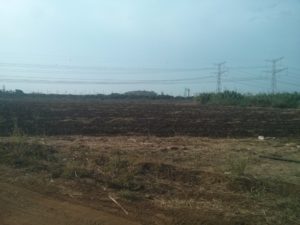 A hill of garbage in the distance, you can see couple of those along the Yarkon. They are no longer used.
A hill of garbage in the distance, you can see couple of those along the Yarkon. They are no longer used.
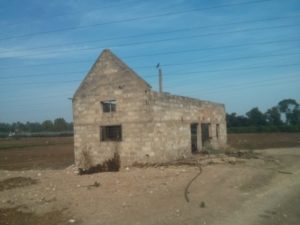 Just an old building with a crew
Just an old building with a crew
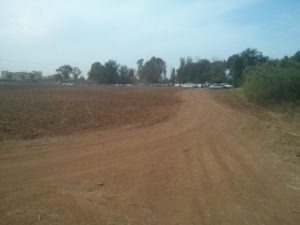 Apparently there was a nice nature party over here.
Apparently there was a nice nature party over here.
The run on israelhiking.com
